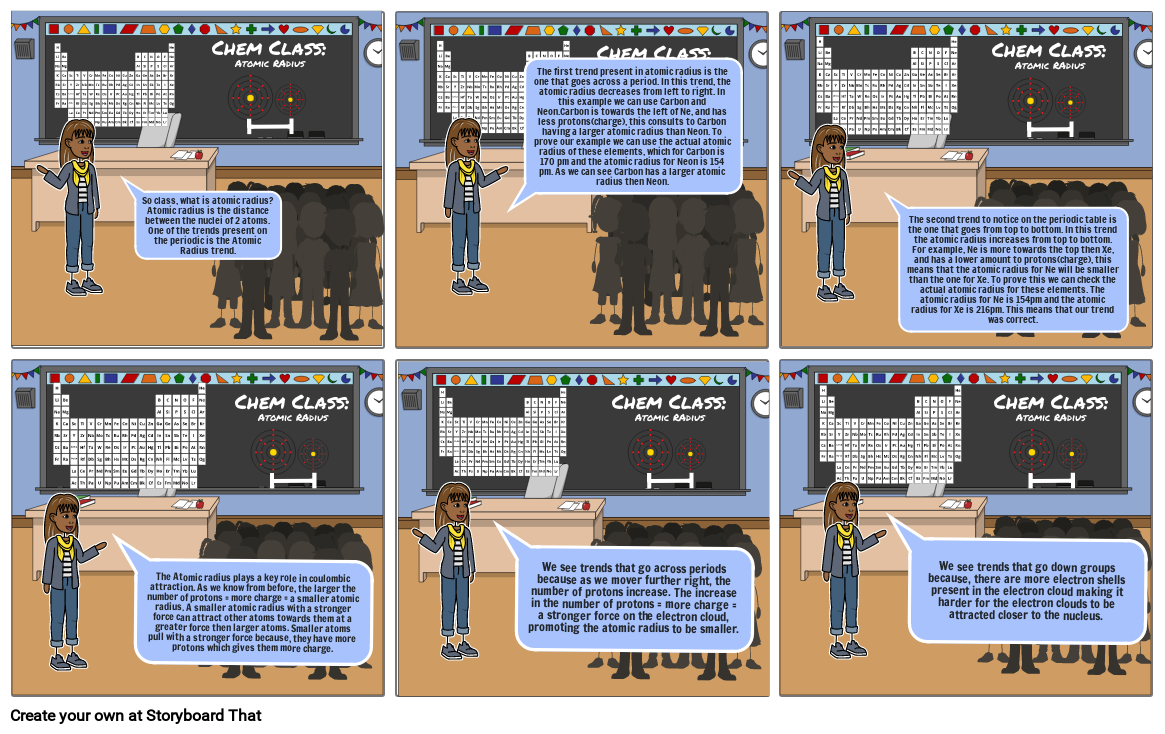Atomic Radius

Storyboard Text
- Chem Class:Atomic RAdius Chem Class:Atomic RAdius Chem Class:Atomic RAdius Chem Class:Atomic RAdius Chem Class:Atomic RAdius Chem Class:Atomic RAdius
- So class, what is atomic radius? Atomic radius is the distance between the nuclei of 2 atoms. One of the trends present on the periodic is the Atomic Radius trend.
- The first trend present in atomic radius is the one that goes across a period. In this trend, the atomic radius decreases from left to right. In this example we can use Carbon and Neon.Carbon is towards the left of Ne, and has less protons(charge), this consults to Carbon having a larger atomic radius than Neon. To prove our example we can use the actual atomic radius of these elements, which for Carbon is 170 pm and the atomic radius for Neon is 154 pm. As we can see Carbon has a larger atomic radius then Neon.
- The second trend to notice on the periodic table is the one that goes from top to bottom. In this trend the atomic radius increases from top to bottom. For example, Ne is more towards the top then Xe, and has a lower amount to protons(charge), this means that the atomic radius for Ne will be smaller than the one for Xe. To prove this we can check the actual atomic radius for these elements. The atomic radius for Ne is 154pm and the atomic radius for Xe is 216pm. This means that our trend was correct.
- The Atomic radius plays a key role in coulombic attraction. As we know from before, the larger the number of protons = more charge = a smaller atomic radius. A smaller atomic radius with a stronger force can attract other atoms towards them at a greater force then larger atoms. Smaller atoms pull with a stronger force because, they have more protons which gives them more charge.
- We see trends that go across periods because as we mover further right, the number of protons increase. The increase in the number of protons = more charge = a stronger force on the electron cloud, promoting the atomic radius to be smaller.
- We see trends that go down groups because, there are more electron shells present in the electron cloud making it harder for the electron clouds to be attracted closer to the nucleus.
Over 30 Million Storyboards Created
No Downloads, No Credit Card, and No Login Needed to Try!
